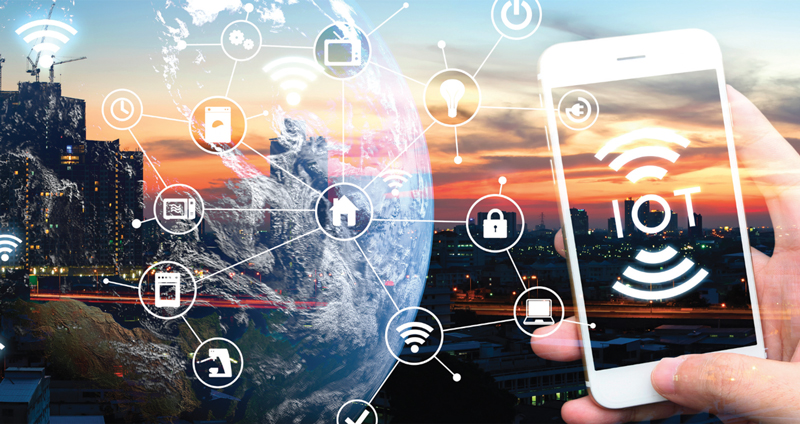The Digitization of the Manufacturing Sector
The digitization represents a radical change. The implementation process of new technologies in the manufacturing sector is ongoing: IoTicontrollo helps to interpret its peculiarities through the use of the most recent IoT technologies
When we talk about “manufacturing industry” we refer to a plurality of markets and related areas. The transformation of the raw material into a product takes place in many sectors, from the latest Istat census the following emerge: food, beverages, textiles, clothing, leather, wood, paper, printing, coke and petroleum, chemicals, pharmaceuticals, rubber and plastics, non-metallic minerals, metallurgy, metal products, electronics, electrical equipment, machinery, automotive, other means of transport, furniture, other manufacturing, repair and maintenance of machinery and equipment. The manufacturing industry is constantly evolving, and must find on the one hand the changing needs of consumption, on the other hand the implementation of increasingly innovative and complex production technologies. For some years now, when it comes to innovation for manufacturing, one immediately thinks of the Industry 4.0 Plan and in particular the implementation of digital innovation in production processes. The themes of automation, robotics, production systems are not only enriched with a dimension linked to the value of data, but allow for the implementation of an integrated, complete and global vision – digitally – of all the company’s assets. The digitization of the manufacturing sector represents a radical change, which is transforming the way factories work, and which allows to change the relationship between products and consumers.



The new technologies of the future
A few years ago, a McKinsey’s research showed that Industry 4.0 was driven by four important changes: the soaring volume of data, computing power and connectivity; the need to develop analytics and business intelligence solutions; new forms of human-machine interaction such as touch interfaces and augmented reality systems; a development of new advanced robotics solutions, and innovation at the level of IoT sensors (Internet of Things)
These technologies have been trying to emerge for years and, although some of them are not yet ready to be adopted on a large scale, all will have to take them into account in the near future. However, it is not expected to see these changes implemented with the same speed as the consumer sector, and above all there will be no such investments for a complete replacement of the production chain machinery.
The possibility of monetizing data
Industry 4.0 will also allow the launch of pay-by-use and subscription services, transforming CAPEX (CAPital EXpenditure) machinery into OPEX (OPerating EXpenditure). Many manufacturing companies, in fact, develop a great experience on their products and related processes but do not know how to derive value from the accumulated data. For this reason, they could monetize by granting the intellectual property of their products, offering advice to give value to their experience. A final aspect of the industry of the future will be the possibility of monetizing data. All this will allow to open new perspectives also in terms of business models as in the case of servitization. We are talking about the possibility of implementing forms of service transformation in which the value for users and customers is no longer in possession, but is in the services that arrive thanks to the use of a product that remains in the hands of other subjects, and that thanks to data and networks allows to remotely operate and manage the products.
Objects that interact with each other and with the surrounding reality
With the aim of accelerating this transformation taking place, IoTicontrollo, a company specialized in the construction of equipment for the IoT world, proposes a solution that introduces the possibility of interacting with each other and with the surrounding reality within the objects. In this way the physical world can evolve through progressive digitization to a different, more secure and monitored state. All this is possible through the IoT and the use of low-power and wide-range networks or LPWA (low-power wide-area). The objects will thus be connected worldwide with great simplicity and efficiency, with batteries lasting ten years and certain connection costs both indoors and outdoors. Here are the main advantages of LPWA technology: energy efficiency; long battery life (up to 10 years); ease of development and support because it is based on cellular infrastructure; outdoor and indoor coverage (cellars, manholes, etc.); safe and secure connection; connection capacity of 100,000 devices per single cell; low component costs; no limitation of duty cycle; small size; free frequency; practically worldwide network coverage. Thanks to the use of latest generation cloud software, the data can be managed and displayed according to specific needs, through interfaces and desktop or mobile applications. Finally, IoTicontrollo products are supplied with a special SIM, in plastic or on-chip version, according to the type of use, conditions and operating needs. In addition to direct consultancy, IoTicontrollo organized a free traveling roadshow which sees the next stage take place in Padua on the 2nd of March.

